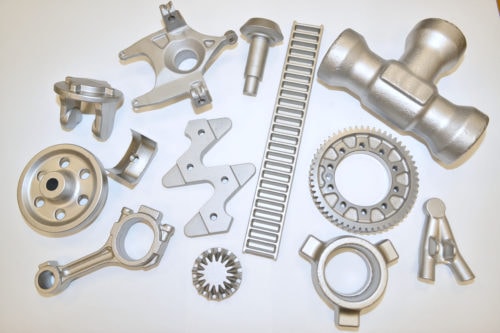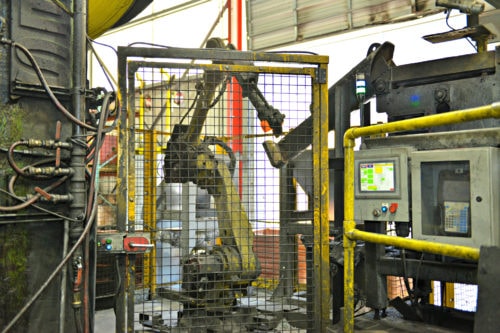Forging is a manufacturing process that uses compressive forces to form metal into the desired shapes and sizes. Industry professionals employ a variety of different forging techniques—depending on the material and the product being forged—each of which carries its own advantages and best uses.
The following blog provides an overview of the different types of forging methods available, outlining what they entail, their key advantages, and their typical applications.

Forging operations can be classified into four main types:
Open Die Forging
Open die forging employs the use of two flat or simply shaped dies to apply pressure to the base material from both sides. The application of repeated high-level compression or hammering to the die forms the material into the desired shape. As the dies used do not completely enclose the base material (hence the open die designation) and allow for lateral movement, the process can accommodate the creation of larger and heavier components.
Compared to other forging processes, open die forging produces very little material waste and final products with more consistent grain structures and higher fatigue resistances. The aircraft and railway industries often make use of the process to manufacture large and heavy components, such as cylinders, rollers, and shafts.
Impression Die Forging
Similar to the open die forging method, impression die forging—also known as closed die forging—uses dies to shape material into the desired parts and products. However, unlike open die forging, the dies employed completely enclose the base material. Additionally, in comparison, the process requires much greater compressive forces to ensure the die cavities are fully filled and form the complete part.
Impression die forged parts are typically smaller than open die forged parts. However, they exhibit tighter tolerances (including for near-net shapes) and higher quality surface finishes, both of which contribute to lower production costs for larger production runs due to the reduced need for secondary machining operations. The automotive, mining, and oil and gas industries often rely on the process to produce precision parts such as fittings, flanges, and engine components.

Cold Forging
While some forging methods require the application of heat to the base metal, there are also a variety of cold forging processes available. Some examples of cold forging methods include bending, cold heading, cold drawing, coining, and extrusion. These processes are used to create a wide range of parts and products in varying designs.
Compared to hot forging techniques, cold forging produces pieces with tight tolerance dimensions and good surface finish quality without the need for heat treatment or more costly materials. The automotive industry commonly uses cold forging to manufacture components with unusual or complex geometries, such as steering and suspension components, braking components, axles, clutches, gears, and pinions.
Learn About Our Stainless Steel Forging
Seamless Rolled Ring Forging

The rolled ring forging process allows for continuous production, which allows for higher productivity and lower production costs. Additionally, rolled ring forged components exhibit greater lifespans and superior surface finishes than other forged parts. Due to their high durability, they are often used in heavy mining equipment, aerospace engines, wind power generators, and railway equipment.
Get the Expert Help You Need From the Team at Cornell Forge
At Cornell Forge Company, we are pleased to provide some of the highest quality forged components in the industry. With over nine decades of experience, we are well versed in every aspect of metal forging, including closed die forging. For more information on the types of forging available or assistance on an upcoming forge fabrication project, contact us or request a quote today.



